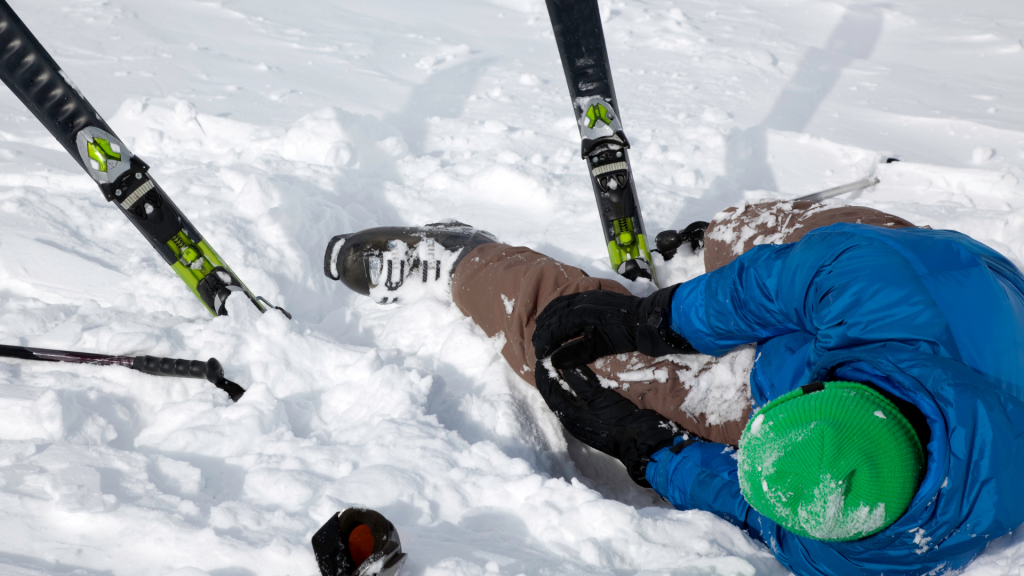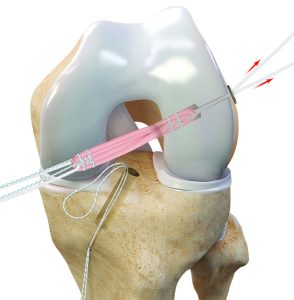What you should know
Typical winter sports mainly include skiing, snowboarding, ice skating and tobogganing. More broadly, winter sports can also include any other physical activity in the fresh air. This also includes jogging or cycling, for example. Snow, ice and wet conditions are particular sources of danger in winter. In connection with these special circumstances, a variety of classic sports injuries can occur. Extremities such as arms and legs are particularly affected. In this article, I will give you an overview of the most important winter sports injuries.
Risks of falling, strain and cold
Fall injuries are very typical in winter. On ski slopes, toboggan runs and ice skating rinks, it is easy to fall during sporting activities. Collisions with other athletes are particularly dangerous. Anyone jogging or cycling in the winter landscape must also expect to fall more often in icy and snowy conditions.
Falls at high speed, especially in alpine skiing, can result in sprains, lacerations, bruises and fractures. In particular, injuries to the extremities (= arms and legs), back and head occur regularly. The hard-prepared slopes, the ever faster equipment and the greater willingness to go off-piste make skiing increasingly susceptible to injury.
The sporting strain itself – possibly due to a lack of previous training and a generally poor athletic condition – can quickly become an overload. Ligaments are strained or torn. Strains due to the cold are also not uncommon, especially if athletes neglect the warm-up process before sporting activity. The cardiovascular system can also be considered indirectly susceptible to the consequences of winter sports. The physical exertion in cold air, which many people are unaccustomed to, favors cardiovascular events.
Injuries to the knee joint
Winter sports enthusiasts on the ski slopes are particularly at risk of knee injuries. It is estimated that over 30% of all skiing injuries are knee injuries. Overloading or accidents can lead to torn ligaments or injuries to the meniscus. injuries to the meniscus. The cruciate ligament injury is particularly common and feared, as it often results in surgery and a lengthy rehabilitation process.

The knee is usually bent more, the center of gravity is further back, while the knee is rotated inwards. This is known as the phantom foot mechanism or dynamic snowplow. The cruciate ligament can also tear during classic “threading” due to valgus (=X-leg) and external rotation.
Many athletes feel a snap in the event of an accident, which is accompanied by an immediate effusion of the knee joint. A hemarthrosis (= bloody effusion of the joint) indicates a torn anterior cruciate ligament until proven otherwise.
It is often not just a cruciate ligament injury. Lateral ligament injuries and meniscus tears are often also affected and prolong the necessary subsequent rehabilitation process.

In young athletes, a torn cruciate ligament is usually repaired with a so-called arthroplasty reconstruction. In older people with low functional demands and good joint stability, conservative treatment methods such as bandages, strengthening exercises, rest and painkillers are also used. In the case of combined injuries to several ligaments and the meniscus, athletes are more likely to benefit from surgery. In young athletes, a torn cruciate ligament is usually repaired with a so-called arthroplasty reconstructed.
Conservative treatment methods such as bandages, strengthening exercises, rest and painkillers are also used in older people with low functional demands and good stability of the joint. In the case of combined injuries to several ligaments and the meniscus, athletes are more likely to benefit from surgery. When choosing a treatment method, it should always be borne in mind that incorrect or untreated meniscus and cruciate ligament tears can lead to premature joint wear and osteoarthritis. Overall, knee injuries can be very protracted. Those affected are restricted in their movement for weeks and must take appropriate rehabilitation measures to build up the surrounding muscles.
Lower leg fractures just above the edge of the ski boot also occur regularly. In the case of a fracture of the tibia and fibula, those affected generally also benefit from an operation to stabilize the bone. Here, too, a correspondingly long period of time off must be expected in order to recover from the injury.
Shoulder area
Falls on wet, slippery surfaces at high speeds often result in shoulder injuries. shoulder injuries. Common injuries here include
- Shoulder dislocations (= dislocations of the shoulder joint)
- Dislocations of the acromioclavicular joint (= AC joint dislocation)
- Fractures of the humeral head or collarbone
- Rotator cuff tears (= tendon tear in the shoulder joint)
The choice of treatment depends on the severity of the injury.

Some can be treated conservatively, others only surgically. Shoulder injuries as winter sports injuries can also lead to a lengthy treatment phase. The affected person is often restricted in their everyday life for a long time. The shoulder is a ball-and-socket joint that is well secured by muscles and has a large range of motion. After injuries, prolonged immobilization is often necessary, which results in a restriction of movement after a certain period of time. Long-term therapy is often required to regain the full range of motion.
Hands and wrists area
Fractures, sprains, torn ligaments and strains are the main causes of wrist injuries.
A classic consequence of winter sports and thus winter sports injuries is the so-called ski thumb. In many cases, a fall is absorbed by the wrists and hands. If you hold the ski pole in your hand during the fall, you spread your thumb. This can lead to a rupture of the inner ligament in the metacarpophalangeal joint of the thumb during a fall. Doctors then speak of ski thumb. Depending on the intensity of the injury, it is treated conservatively with a special thumb cast or surgically.
A fall on the wrist, which is often unprotected – please use snowboard gloves with reinforcement – often results in fractures of the distal radius (= fracture of the radius close to the wrist) but also of the carpal bones. Scaphoid fractures are particularly problematic, as they are often overlooked during the initial examination. In this case, it is often only a computer tomography or an MRI that provides information about the fracture.
In terms of pain intensity, fractures in the wrist cannot always be immediately distinguished from a severe sprain. Depending on the fracture pattern of the bone and the degree of dislocation, conservative or surgical treatment is used.
Back area
Back injuries are particularly common on the ski slopes due to falls and collisions with other athletes. Fractures of the cervical vertebrae, lumbar and thoracic spine are typical. Fractures in these areas are serious injuries and should be examined by a specialist after initial treatment.

To avoid such dreaded injuries, back protectors can be worn at high speeds or when riding in high alpine terrain, which can distribute and powder the pressure in the event of a fall.
Milder injuries to the back include typical bruises or sprains that can occur as a result of a fall or incorrect movements.
Anyone who goes untrained on the slopes risks muscular tension which can lead to painful blockages. This otherwise trivial problem can nevertheless mean the end of winter sports for your vacation. If you don’t warm up, are untrained or use the wrong equipment on the slopes, you risk a lot in this area.
Head area
The most dangerous winter sports injuries include accidents involving the head. Injuries here range from a relatively harmless concussion to a fractured skull. Head injuries can also occur when cycling in winter, jogging, ice skating and tobogganing. They are not reserved for the ski slopes. This is why you should always wear a protective helmet when practicing high-speed sports.
Ankle and foot
Fractures of the ankle and foot, torn ligaments, sprains and strains affect the lower part of the leg. They also occur relatively frequently. Unsuitable footwear for winter jogging, for example, may have played a role here. An ankle fracture also usually requires surgical treatment and leads to weeks of loss of joint function. Here too, as in many other areas, comprehensive rehabilitation is necessary.
Prevent winter sports injuries
Not all accidents on the ski slopes, for example, can be avoided. Sometimes it also depends on the behavior of other people involved. However, there are some factors that we can take into account in our preparations and reduce the likelihood of a winter sports injury.

These factors include:
- Sufficient and early preparation through training for winter sports (ski gymnastics, endurance training and strength training)
- Appropriate equipment such as a helmet, suitable shoes for jogging and suitable clothing
- Gradual introduction to winter sports (overload peaks and overexertion are avoided)
- Adapt your behavior to the weather (avoid jogging and cycling when there is black ice, be particularly careful when skiing on icy slopes, if in doubt, choose a safer option)
- Generally prudent behavior on winter sports areas
- a sporting behavior adapted to age and constitution (black slopes may not be the right choice for the occasional skier of senior age, jogging on icy forest ground can be replaced by the more gentle walking)
- Regular warm-up and mobilization exercises before every sports session.
Many accidents are the result of carelessness during winter sports. Those who are careful and prepared for winter sports get more out of winter sports and risk fewer typical winter sports injuries.